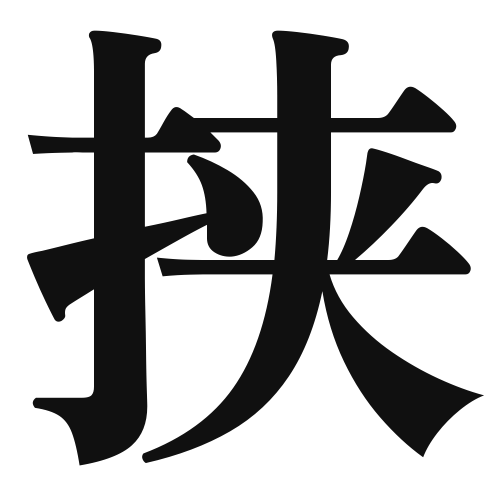1. Overview of Meaning
The kanji “挟” (hasamu) means “to pinch,” “to hold between,” or “to insert.” It conveys the idea of something being caught or held between two objects or forces.
2. Formation and Radical
Formation of the Kanji: The kanji “挟” is a compound character (会意文字) that combines the elements of “手” (hand) and “夾” (to hold or pinch). This reflects the action of using a hand to hold something between two points.
Radical: The radical of “挟” is “手” (shou), which relates to actions performed by the hand.
3. Examples of Usage
Common Words and Phrases:
- 挟む (hasamu) – to pinch or to hold between
- 挟み撃ち (hasamiuchi) – to attack from both sides
Example Sentences in Daily Conversation:
- この本を挟んで、ページをめくってください。 (Please hold the pages of this book between your fingers as you turn them.)
- 彼は私の意見を挟んで、話を進めた。 (He advanced the conversation while incorporating my opinion.)
4. Synonyms and Antonyms
Similar Kanji:
- 挟む (hasamu) – to pinch or hold between (similar in action)
- 夹む (kakamu) – to hold or pinch (used in a similar context but can imply a more gentle action)
Antonyms:
- 解放 (kaihou) – to release or liberate (opposite of holding or pinching)
- 離れる (hanareru) – to separate or detach (indicating a lack of holding)
5. Cultural and Historical Background
Relation to Japanese Culture: The concept of “挟” is often seen in traditional Japanese practices, such as in the art of origami, where paper is folded and held in specific ways.
Proverbs and Idioms:
- 挟み撃ち (hasamiuchi) – This phrase is used to describe a situation where one is attacked from two sides, often used metaphorically in discussions about being caught in a dilemma.
